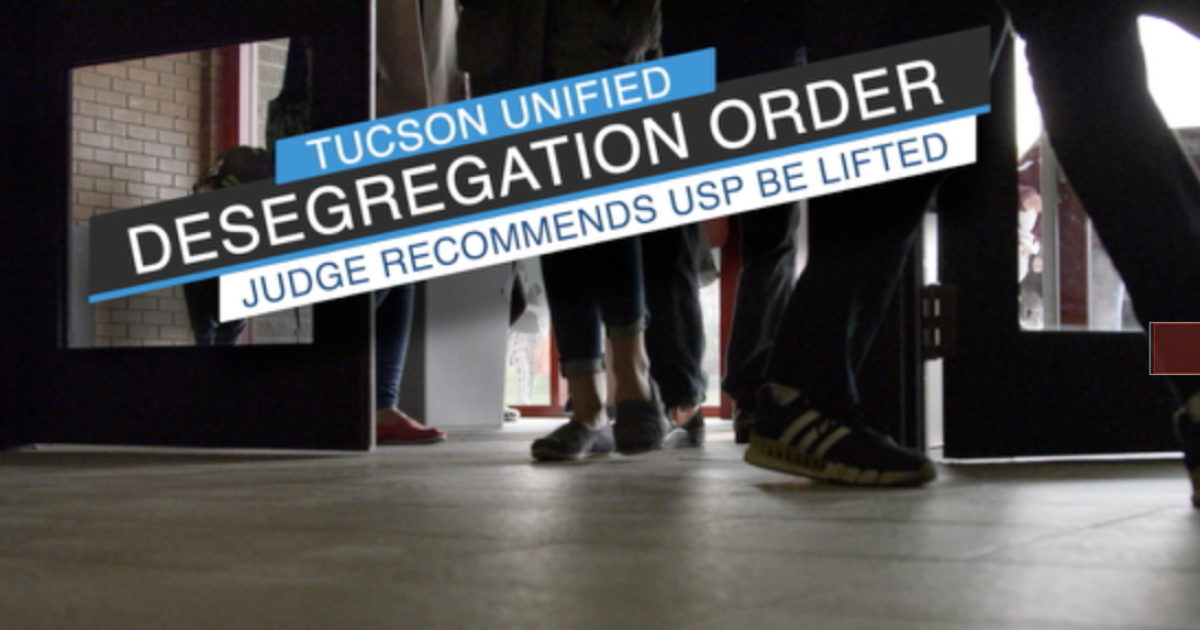The End Of A Desegregation Order: A Turning Point In Education?

Table of Contents
The Legal and Political Context of Ending Desegregation Orders
The end of desegregation orders wasn't a spontaneous event; it was a gradual process shaped by evolving legal interpretations and shifting political priorities.
Shifting Legal Landscape
Changes in Supreme Court rulings and federal legislation significantly impacted desegregation efforts.
- Milliken v. Bradley (1974): This landmark case limited the scope of desegregation orders, preventing cross-district busing to achieve racial balance. This effectively hampered efforts to desegregate many metropolitan areas where residential segregation had created racially isolated school districts.
- The weakening of the Department of Education's enforcement: Over time, federal oversight of desegregation efforts diminished, leading to less stringent enforcement of court orders. This allowed many districts to gradually phase out desegregation programs.
- Changes in federal funding priorities: A shift away from desegregation-focused funding towards other educational initiatives further weakened the enforcement mechanism.
The reasoning behind these shifts often centered on concerns about states' rights, local control over education, and the perceived inefficiency or impracticality of large-scale desegregation plans.
Political Factors
The political climate played a crucial role in the waning of desegregation efforts.
- Rise of conservative movements: The growing influence of conservative political ideologies often emphasized local control and questioned the effectiveness of court-mandated desegregation.
- "White flight": The movement of white families from urban districts undergoing desegregation to suburban areas further exacerbated racial segregation in schools. This demographic shift made the enforcement of desegregation orders increasingly challenging.
- Political pressure from state governments: Many state governments actively resisted federal intervention in their education systems, actively lobbying for the relaxation or termination of desegregation orders.
These political dynamics significantly influenced the legislative and judicial decisions that ultimately led to the end of many desegregation orders.
The Educational Impact: Examining Achievement Gaps and School Diversity
The end of desegregation orders had a profound, and often negative, impact on both academic achievement and school diversity.
Achievement Gaps
The removal of desegregation mandates has frequently been linked to a widening of the achievement gap between racial and ethnic groups.
- Statistical data reveals disparities: Studies consistently demonstrate lower test scores, graduation rates, and college enrollment rates for minority students in formerly desegregated districts after the end of court orders.
- Socioeconomic factors complicate the picture: While desegregation was not a panacea for all educational inequalities, its end often exacerbated existing socioeconomic disparities, creating a complex interplay between race, class, and educational outcomes. Students from low-income families, regardless of race, often experience significant educational disadvantages.
The impact of the end of desegregation orders on achievement gaps highlights the ongoing struggle for educational equity.
School Diversity and Integration
The end of desegregation orders dramatically altered the racial and ethnic composition of many schools.
- Re-segregation of schools: In many districts, the end of court-ordered desegregation led to a gradual but significant increase in racial segregation, with schools becoming more homogenous in terms of racial/ethnic makeup.
- Impact on social interactions: The lack of diverse learning environments can limit opportunities for students to interact with individuals from different backgrounds, potentially hindering social development and intercultural understanding.
- Data reveals re-segregation trends: Analysis of school enrollment data from various districts reveals a clear trend towards re-segregation following the end of desegregation mandates.
The loss of school diversity has long-term implications for social cohesion and educational opportunity.
Long-Term Consequences and Future Implications
The long-term consequences of ending desegregation orders are complex and far-reaching, often interacting with pre-existing socioeconomic inequalities.
Socioeconomic Factors
The impact of ending desegregation orders is intertwined with deeply entrenched socioeconomic inequalities.
- Residential segregation: The persistence of residential segregation continues to contribute to school segregation, even in the absence of formal desegregation orders. This highlights the need for comprehensive strategies that address both housing and education policies.
- Poverty and its impact on education: Low-income families often lack access to quality education resources, regardless of school location or desegregation status. Addressing this requires a multifaceted approach encompassing poverty reduction, investment in underserved communities, and improved educational resources.
- The interplay between race and class: The complex interaction between race and class makes disentangling the impacts of desegregation's end exceptionally difficult. Many issues overlap, demanding comprehensive and integrated solutions.
The Path Forward
Achieving educational equity in a post-desegregation era requires a renewed commitment to proactive strategies.
- Investing in equitable funding: Addressing funding disparities between wealthy and impoverished districts is crucial for creating equal educational opportunities.
- Promoting school choice programs that enhance integration: Careful design of school choice programs can encourage more diverse student populations in schools.
- Implementing community-based initiatives: Local programs focusing on fostering inclusive communities and providing support to students from disadvantaged backgrounds can promote educational success.
Policy recommendations should focus on addressing systemic inequalities and promoting equitable educational opportunities for all students.
Conclusion: The End of Desegregation and the Future of Education
The end of desegregation orders did indeed represent a significant turning point in American education, but not necessarily in a positive direction. The evidence suggests that the lifting of these orders has contributed to re-segregation, widening achievement gaps, and perpetuating socioeconomic inequalities. Key takeaways include the demonstrable increase in school segregation, the widening achievement gap between racial groups, and the complex interplay between socioeconomic factors and educational outcomes. Understanding the end of desegregation orders and its legacy is crucial for promoting educational equity after the end of desegregation. We must actively address the ongoing struggle for educational justice and work towards a future where every student has equal access to a quality education, regardless of race or socioeconomic status. The future of education hinges on our commitment to dismantling systemic barriers and ensuring equitable opportunities for all.

Featured Posts
-
 Unlocking Shared Knowledge Exploring Project Muses Collaborative Features
May 02, 2025
Unlocking Shared Knowledge Exploring Project Muses Collaborative Features
May 02, 2025 -
 Is This Xrps Big Moment Etf Approvals Sec Developments And Market Impact
May 02, 2025
Is This Xrps Big Moment Etf Approvals Sec Developments And Market Impact
May 02, 2025 -
 Xrp Future Price Analyzing The Post Sec Lawsuit Market Outlook
May 02, 2025
Xrp Future Price Analyzing The Post Sec Lawsuit Market Outlook
May 02, 2025 -
 Misinformation And Persuasion Lessons From Cnns Experts
May 02, 2025
Misinformation And Persuasion Lessons From Cnns Experts
May 02, 2025 -
 Chief Election Commissioner Confident A Robust Poll Data System
May 02, 2025
Chief Election Commissioner Confident A Robust Poll Data System
May 02, 2025
Latest Posts
-
 Is Benson Boone Copying Harry Styles The Singers Response
May 10, 2025
Is Benson Boone Copying Harry Styles The Singers Response
May 10, 2025 -
 Benson Boone On Comparisons To Harry Styles A Direct Response
May 10, 2025
Benson Boone On Comparisons To Harry Styles A Direct Response
May 10, 2025 -
 Benson Boone Responds To Harry Styles Copying Accusations
May 10, 2025
Benson Boone Responds To Harry Styles Copying Accusations
May 10, 2025 -
 How Harry Styles Reacted To A Hilariously Bad Snl Impression
May 10, 2025
How Harry Styles Reacted To A Hilariously Bad Snl Impression
May 10, 2025 -
 Harry Styles On That Awful Snl Impression His Honest Response
May 10, 2025
Harry Styles On That Awful Snl Impression His Honest Response
May 10, 2025
